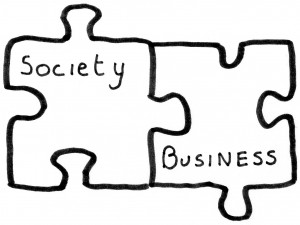Often when we talk about innovative business models we look at new companies that are disrupting industries and start-ups with phenomenal growth stories. But reconfiguring the existing business model or inventing new business models while the old one is still being executed is even a bigger challenge for established companies.
Imaging Siemens Building Technology (SBT), an operating division of Siemens AG focusing on building automation, control products and systems and fire safety. They had built a very strong global position in fire detection systems. SBT was especially strong at the premium, high end of the market, where it was usually the leading player. In emerging markets such as China, however, it was a different story and they needed to come up with a new strategy.
Need for a new business model
In China, the biggest and most attractive market for fire detection systems was at the low-end, with about 17m units of sales worth more than €100m in 2007-08. It was also the fastest growing part of the market.
But the sector was dominated by local companies with local products that were being sold at a price point about 75 per cent lower than in the high-end segment. On top of this, the low-end was a pure product market in which customers were not asking for the types of additional services that were typical of the high-end of the market, where products made up for only a small part of the revenues and even less of the profits.
Is it possible to run two different business models within one company?
SBT decided to enter the low-end with price competitive products. But they knew that in order to achieve this, they had to reinvent their business model. Two decisions were key.
First, SBT decided to locate the product development and management for the new products close to the customer. This was a heavily debated topic within the company. Traditionally, product development and management for the worldwide product portfolio was based at the company’s headquarters in Switzerland. But the management team in charge of this project pushed for a local base partly to stress the point to the rest of the company that to succeed in China, the company needed to develop radically different processes from anything they had done before. The developed a differentiated product portfolio under the Siemens CerberusECO brand. The key was to develop a clear and easy to understand differentiation between the existing products (CerberusPro) for the high and mid-market and the new CerberusECO products for the low end of the market. The main differentiation criteria were product features, price, and sales channels. CerberusECO products, for example, were planned with stub line, no polarity, and a simple labyrinth at a price point that was 50 to 60 percent lower than the existing mid-market offerings like the SBT BC8001/2. The development of the new product family was supposed to be done in China by a new local R&D team that received support from R&D headquarters in Switzerland.
Second, the company adopted a new approach to sales. Rather than building on Siemen’s local company for sales support, the management team decided to involve external companies, so called value-adding partners. For the coastal regions and the tier one cities they decided to use already established value-adding partners, they had previously used for their high-end products while for the tier 2 and tier 3 cities in the Western provinces of China they recruited new partners purely for their low-end product.
Key lessons:
Important challenges for a company known for servicing the high-end of the market and choosing to enter a low-end market lies in finding the right business model, especially regarding product development, service, sales, branding, and pricing. Unless the business model is localized in these key areas, established high-tech companies will not be able to hit the ambitious costs reductions needed to be successful in the low-end of the market.
But, ignoring the strong growth in the low-price segments might be even more risky for the established companies: It will allow new competitors to cover these markets, generating significant profits by volume effects and getting the financial strength to enter the premium markets later, too.
After almost two years in the Chinese market, SBT has captured significant market share which helped them not only to reach their price targets for the low-end but also to become even more profitable in the high-end due to the overall higher volume. Taking this additional profits to invest in R&D will help them to keep their technological leadership. And last but not least this case shows another important point as Siemens is now able to use all of their learnings from the China endeavor to conquer other fast growing economies like Vietnam, Indonesia or Russia based on products and processes developed for China.
This blog is based on our case study “Siemens CerberusEco in China: Introducing low-frills products in a high-quality company” by Martin Kupp and Olaf Plötner, which was also published by the Financial Times.
Associate Professor for Entrepreneurship /
(illustration : Shangaï en 2010)





